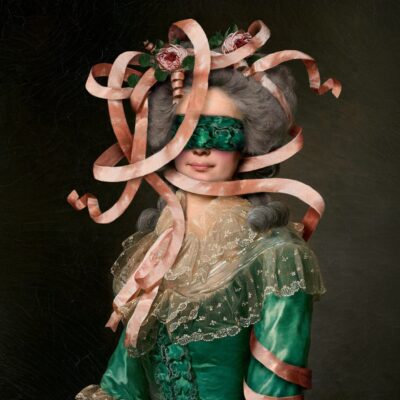
EFHA World 26.05.2025
23.11.2023
European fashionfashion exhibitionfashion historyFrench fashion
This gold lamé evening gown, designed by Maggy Rouff, is featured in Modemuseum Hasselt’s exhibition ‘We Need to Talk about Fashion.’
A guest post by Modemuseum Hasselt
As a museum, the presentation of historical garments within the context of today’s socio-political climate often poses a complex challenge. It necessitates an exploration of how to effectively showcase heritage that may no longer align with our present-day narratives.
This gown showcases intricate embroidery influenced by Indonesian temple motifs and gracefully conforms to the wearer’s silhouette, incorporating pockets that create a trompe-l’œil illusion at the thighs. Within the exhibition’s section dedicated to resistance in fashion, Maggy Rouff (Marguerite Besançon de Wagner, 1896-1971) is presented as a female designer who has been marginalized within the framework of traditional historiography, often written by men.
During the occupation of France starting in 1940, societal norms naturally shifted. Some designers took a critical stance toward what they perceived as the “terrible laxity of the pre-war era”. Prominent couturier Maggy Rouff, a Belgian native known for her elegant, feminine designs, openly expressed concerns and critiqued the prevailing attitudes of the interbellum. The crux of Rouff’s criticism centered on the ‘decay of morals’ and the ’emancipation of women,’ two phenomena that had been perceived as mutually influencing each other, reshaping society since the 1920s. These new morals were translated into fashion by designers challenging a classic idea of womanhood such as Gabrielle “Coco” Chanel, in whose designs the female body was not presented to men but dressed in functional creations.
Maggy Rouff opened her couture house in Paris in 1929, a time when the prevailing fashion trends were characterized by the flapper dress and the garçonne style. However, Rouff’s creations could be interpreted as a departure from the dominant norms of the interbellum era. In contrast to the corset-defying gowns of Chanel or the knee-length robes de style by Lanvin, Rouff’s designs aligned more with the perceived ‘traditionally feminine’ style. This was later exemplified by Christian Dior, who introduced his defining and divisive Corolle line around the same time as the estimated date of the gown showcased in Hasselt.
Modern and contemporary perspectives often associate fashion and resistance within a feminist framework; however, it is important to acknowledge that resistance encompasses various forms, including resistance against novelty and modernity, alongside resistance against tradition.